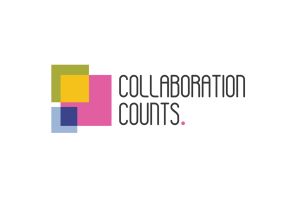
Exploring Key Myths Around Collaboration and Agencies

Today the MAA, in partnership with global marketing and technology agency DigitasLBi, announced the results of an extensive study to demonstrate the true impact of collaboration on business and creativity. The study - spearheaded by DigitasLBi’s CEO UK, Michael Islip in his role as MAA’s chair of collaboration and sponsorship - identified five key findings that exploded preconceived myths about collaboration between agencies and clients.
Michael Islip, CEO, UK at DigitasLBi commented: “We’re delighted to be launching the first major study looking at the impact of collaboration and its true value to clients and agencies. The findings disrupt some key myths and preconceptions – and have the potential to change the way we think about and promote collaboration within our businesses.”
To complete the study DigitasLBi and MAA joined forces with the University of Cambridge, UCL School of Management, and Curve. The qualitative research was based on 1,795 responses across four agencies (DigitasLBi, HeyHuman, Six and Wasserman) with the findings broadly consistent across all agencies.
The study explodes five key myths about collaboration and agencies:
Myth 1: Collaboration is always good
A key myth busted by the research was the belief that all collaboration is good. The study revealed that over-collaboration can actually hurt the quality of work; with a jump from “once a day” to “multiple times a day” seemingly to result in employees feeling the quality of their work for the client decreases.
Myth 2: All agencies are different
The research revealed that people are more different from each other than their agencies are different from each other. This means that when people report different collaboration experiences, these experiences primarily stem from the characteristics of individual interactions, as opposed to agencies collectively reporting fundamentally different collaboration experiences.
Myth 3: Co-location is always a good thing for collaboration, regardless of where it is
Co-location is often cited as a key basis for effective client / agency collaboration. To test this theory, the study looked at what happens when co-location occurs at the client’s office versus the agency’s office. Agency respondents felt that frequency of interaction with clients dropped dramatically when they are co-located at the client’s office in comparison to when they are co-located at the agency’s office. This tallies with anecdotal evidence suggesting that agency staff prefer to be based within the familiar surroundings of their own agency rather than being regularly based at the client’s office. Intriguingly however the research found that co-locating at the client’s offices seems to improve the quality of work for them. So agency employees may not always enjoy being based at their client’s offices, but there is evidence to suggest that it produces the best outcomes.
Myth 4: Agencies are resistant to collaboration with clients
30.3% of agency respondents felt that the level of collaboration with clients was either “too little” or “a bit less than ideal”. This contrasted with only 9.3% of agency respondents who felt that collaborations were at the other end of the spectrum in the “a bit more than ideal” or “too much” categories, showing agencies would like to see more collaboration with their clients in order to produce the best work possible.
Myth 5: Clients and agencies always know when they have reached an optimum level of collaboration
The research shows that when it comes to collaboration, what’s best for agencies might not be best for clients. It seems that when agency employees feel the degree of involvement in the collaboration is “just right,” clients report lower scores concerning whether their agency is taking a collaborative approach to working together. Conversely, clients feel that their agency is taking a collaborative approach when they are seemingly taking a “hands off” approach (where agency employees say there is “too little” involvement) or becoming highly involved (where agency employees say there is “too much” involvement).
Matt Sullivan, the Head of Membership at the MAA, said: “This groundbreaking research is important because all our work with agencies, especially with the MAA #DoDifferent Awards, highlights that the best marketing communications emerges where clients and agencies have moved away from a transactional relationship towards models that involve greater collaboration.”
“The MAA’s efforts to help agencies look forward, through our Agency of the Future project, highlight collaboration as a major factor in the success of the client/agency relationship but Collaboration Counts takes this further, providing valuable insights around the different forms it takes, and demonstrating that not all collaboration is equal.”
John Monks, co-founder of Curve: "Forging brilliant collaborations is at the heart of what all of today's creative leaders must do. This research gives those leaders some real insight into what works and what doesn't so they can design and manage client/agency teams that deliver the best results.”













